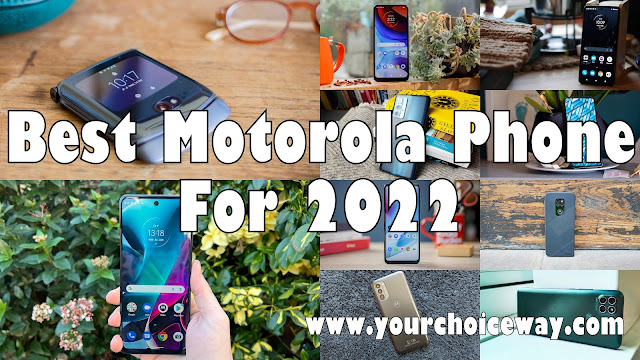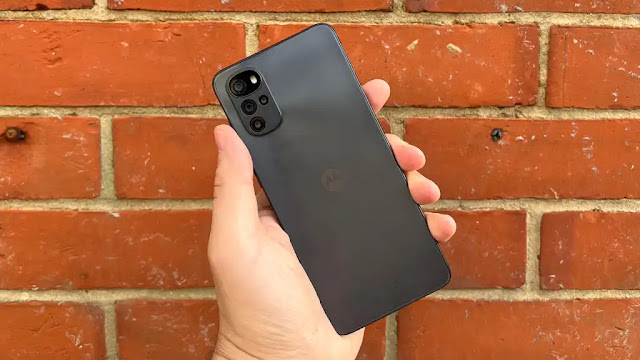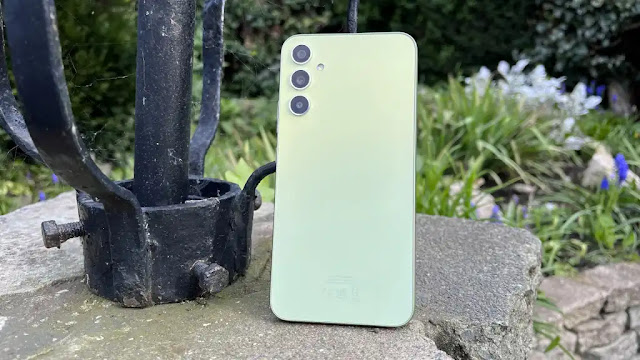The Moto G8 Power might not look like much, but its 5000mAh battery will last for days, which helps offset a dull design and mixed camera performance
With a big battery and simple specs, the Moto G8 Power will last for days without breaking a sweat. On the downside it’s not much of a looker, it can get a little sluggish, and while the main camera lens is fine the additional shooters don’t add much.
This price point is all about priorities though, so if battery is yours then look no further.
Price When Reviewed
- $249
Motorola’s G-series has long been the king of the budget phone market, and the G8 line continues that tradition. The Moto G8 Power is the big battery brute of the lineup, offering fairly basic specs but enough power to last for two or three days with relative ease.
You’ll have to make compromises on niceties like display and camera quality - and the phone itself has to be a bit of a chonk to fit that huge battery in - but for anyone fed up of phones that die by mid-afternoon this is inarguably one to watch.
It’s worth noting that in the US and some other markets this is known simply as the Moto G Power - but it’s essentially the same device.
Design & Build
There’s not an awful lot to the look of the G8 Power, but that’s no bad thing. On the front you’ll get a mostly-full-screen experience, with a camera cut-out in the top-left corner, and bezels around the sides that might be chunkier than the latest flagships, but are pretty impressive for a phone at this price.
You get a choice of black or blue, with a plastic body that’s curved enough to feel comfortable in the hand, and seems like it should be pretty sturdy.
As I’ve already mentioned, it is pretty hefty though. The 6.4in display means it’s a big phone by any measure, and at 9.6mm thick it feels fairly chunky - the inevitably compromise from fitting a big battery inside. At 197g it’s lighter than it looks though, helped by the plastic construction, so the size never feels like too much of a problem.
For your money you also get a USB-C port, headphone jack, stereo speakers, power and volume buttons, and a rear-mounted fingerprint scanner emblazoned with the Motorola ‘M’. This isn’t the fastest scanner in the world, but it gets the job done and it’s proved reliable so far.
Motorola says the phone is splash-resistant, but there’s no official IP rating for waterproofing. The other major omission is NFC, so you won’t be able to use the G8 Power for contactless payments through Google Pay.
The G8 Power won’t win any design competitions, and you’ll find flashier looking fare around this price from Chinese rivals like Honor and Realme, but if you value function over form the Motorola might still win you over.
Specs, Performance & Battery
So, specs. The Snapdragon 665 at the heart of this phone is a pretty low-end chipset at this point, and with only 4GB of RAM to back it up (and 64GB of storage) does feel a little sluggish.
It doesn’t hang or freeze in any dramatic fashion, but it will pause when switching apps, and even navigating the settings feels a little slow at times. This is typical for a phone at this price though, so you’re unlikely to find anything much faster without spending more, and will still handle day-to-day light usage comfortably - just don’t expect to play anything more hardcore than Candy Crush without the phone running hot and struggling.
The 6.4in IPS display has a resolution of 1080x2300, so you’re getting full HD. It’s fairly bright, even on a sunny day, with decent viewing angles to boot. Again, it’s nothing special, but there equally isn’t really anything to complain about here.
Battery is unsurprisingly where the G8 Power really comes into its own though. Even as a moderate-to-heavy phone user I managed to keep this thing running for two and a half days before it packed in, with the help of a 5,000mAh battery - overkill with such lightweight components elsewhere.
Even after a couple years of use I can’t imagine the G8 Power ever struggling to make it to the end of the day, which brings a pretty invaluable peace of mind. 15W wired fast charging means it should top up fairly quickly too.
Cameras
The cameras are the one oddity here. Motorola has gone all-in with four separate lenses, which frankly feels unnecessary - especially when none of them are that great. It gives you a fairly versatile setup, but I imagine most users would be better served by a single or dual lens setup that delivered better results.
The main lens is 16Mp, f/1.7, and it does a decent enough job. Colours are bright and pleasant, and detail is sufficient at a glance - though a lot is lost in the shadows.
The 8Mp f/2.2 ultra-wide handles colour just as well, with bright, vibrant shots, though suffers from the same flaws, but worse: significant loss of detail and poor dynamic range. Meanwhile the 8Mp f/2.2 telephoto offers crisp enough zoomed in shots, but blows out any light, washing colour out.
Finally, the less said about the 2Mp f/2.2 macro lens the better: at the same distance it was consistently out-performed by the main lens, which delivered better detail and colour accuracy even in extreme close-up, leaving me to wonder why the macro is here at all, except to bump up the lens count.
Other options include the usual portrait and panorama, though there’s no dedicated night mode. In terms of video, you can shoot HD at 60fps, or 4K at 30fps, along with slow motion at up to 240fps.
As for the punch hole selfie camera, it’s a 16Mp, f/2.0 shooter that does a surprisingly good job, especially in dynamic range and detail. When you factor in the price point too, this is a seriously good selfie shooter.
Software
Software is one of the areas where Motorola has a serious leg-up over most of the budget competition, with the possible exception of Nokia.
Both brands have leaned into Google’s support to provide an Android experience that’s very close to the default, with almost no bloatware or hidden extras to slow the phone down or take up storage space.
There aren’t many exciting software perks to be fair - mostly some extra gesture options and a ‘peek’ display mode for notifications - but you’re getting a pretty clean, simple Android experience that you definitely won’t find on every phone at this price.
Price
Speaking of price, at £219/$249 the G8 Power is undeniably affordable. The only problem? Lots of other phones are these days too.
At that price you’ve got the Redmi Note 8T, Oppo A9 2020, and Realme 6 all in competition in our budget phone chart, offering comparable performance and superior cameras - not to mention the Moto G8, G8 Plus, and the rest of the G8 range.
Still none of those will match the G8 Power on sheer bloody-minded longevity, so it’s mostly a matter of weighing up how flashy design and fancy cameras compare to battery life and software simplicity for you.
Verdict
If power is your main concern this remains the best budget phone for battery, and one of the best for simple software too.
On the downside it’s not much of a looker, it can get a little sluggish, and while the main camera lens is fine the additional shooters don’t add much.
This price point is all about compromises and priorities though, so you’ve got to decide what matters most to you. And if that’s battery, then look no further.
Specs
- Cameras: 16Mp main, 8Mp ultra-wide angle, 8Mp 2x telephoto, 2Mp macro, 16Mp front
- Battery: 5000mAh w/ 15W TurboPower charging
- Display: 6.4in, 2300 x 1080, 19:9 IPS LCD screen
- Audio: 3.5mm headphone jack, stereo speakers, FM radio
- Processor: Octa-core Qualcomm Snapdragon 665
- Storage: 64GB w/ microSD support up to 512GB
- Security: Rear fingerprint sensor
- Dimensions: 156 x 75.8 x 9.6mm
- Colours: Capri Blue, Smoke Black
- Operating system: Android 10
- Memory: 4GB RAM
- Weight: 197g
View the original article here
























%20Review.webp)



0 comments:
Post a Comment